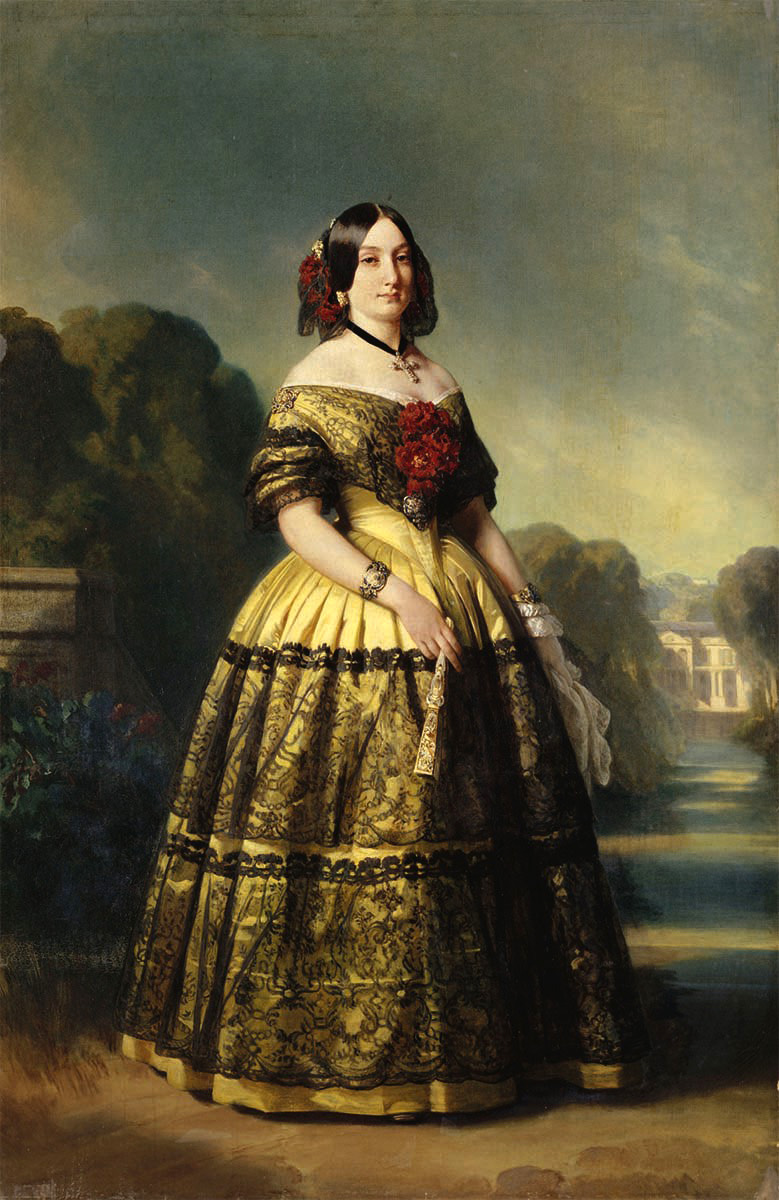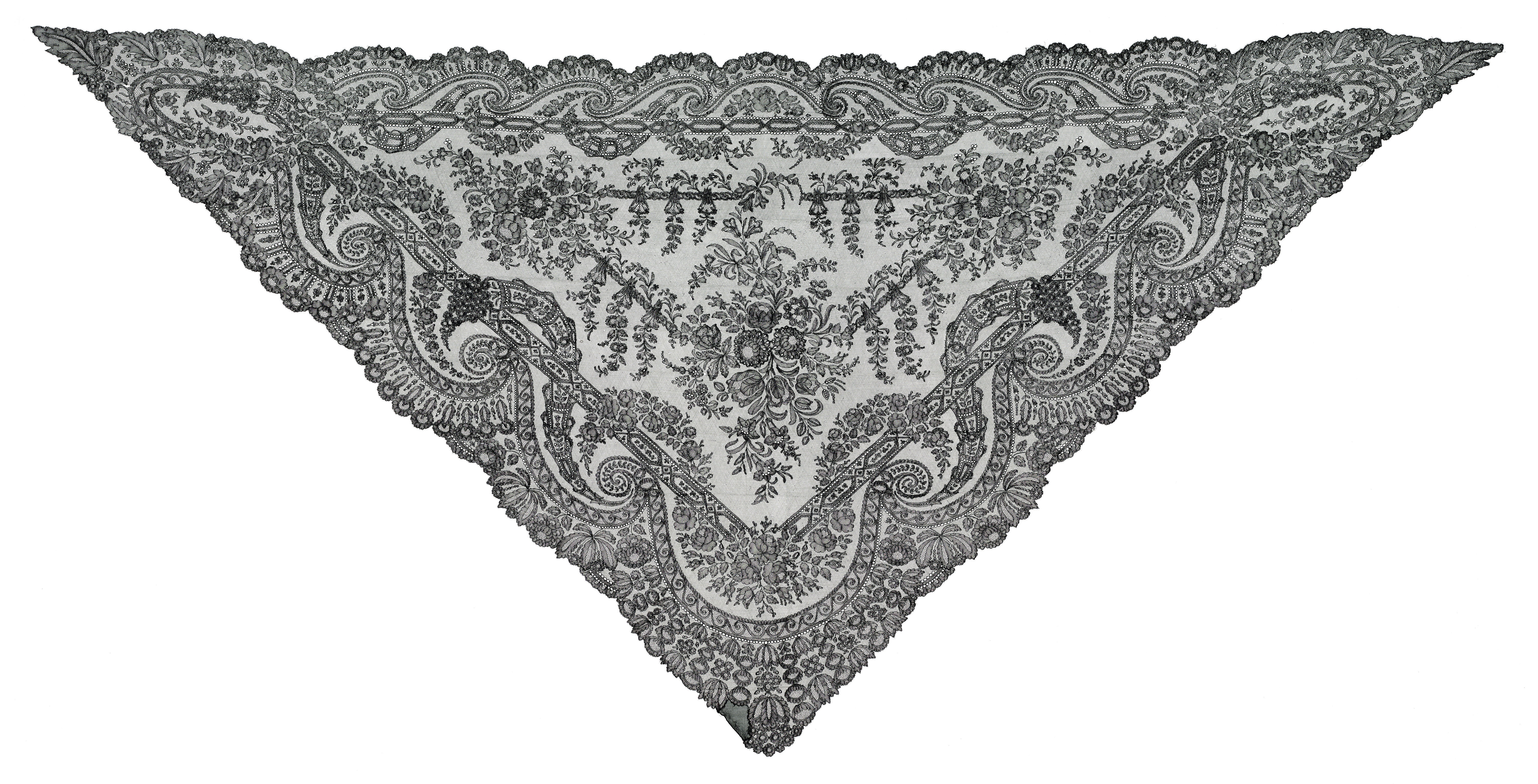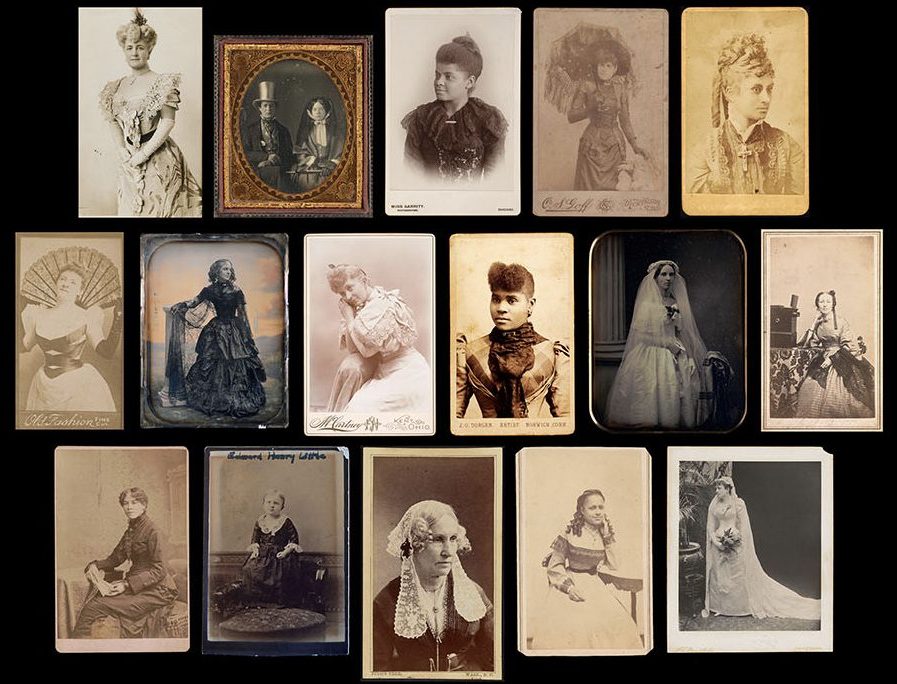“Real” and “Imitation” Lace in the Nineteenth Century
Following the precipitous downturn in European lace production at the time of the French Revolution (1789–99), handmade lace began to make a slow recovery. At the same time, the recently established machinemade lace industries, especially those in Britain and France, advanced rapidly, and, by the mid-century, machine-made “imitation” lace closely resembled handmade “real” lace. While only very wealthy women had the means to purchase handmade laces from leading centers including Alençon and Chantilly in France and Brussels, those of the burgeoning middle classes enjoyed well-made, well-designed, and substantially more affordable machine-produced goods that were manufactured in Britain’s East Midlands and the French towns of Calais and Caudry.
ca. 1860
Silk
Textilmuseum St. Gallen, Acquired from the Estate of John Jacoby, 1954, 00480
Photo: Michael Rast
Lace was now solely the domain of women’s fashion. While an elegant toilette still required lace accessories such as caps, collars, and cuffs, lace was also increasingly incorporated into day and evening dresses as trimming and as deep flounces that decorated the expansive skirts in vogue from the 1830s through the late 1860s. By the end of the nineteenth century, however, the handmade lace industries were once again in decline, and, since World War I, machine-made laces have dominated the market.

Franz Xaver Winterhalter, Duchess of Montpensier (Infanta Luisa Fernanda of Spain), 1847. Oil on canvas. Musée national des châteaux de Versailles et de Trianon, Versailles, MV5113. © RMN-Grand Palais / Art Resource, NY.

ca. 1855–58
Yellow silk taffeta trimmed with black Chantilly lace
Courtesy National Park Service, Longfellow House – Washington’s Headquarters National Historic Site, LONG 13493
Photo: Julia Featheringill
Lace in American Portrait Photography, 1850–1900
Students at Bard Graduate Center developed this interactive feature which uses surviving photographic portraits to explore the diversity of lace consumption in nineteenth-century America. These images illustrate the changes in women’s dress and self-presentation brought on by the mechanization of the lace industry and the invention of photography. Click through to see how American consumers incorporated lace into their fashionable ensembles, using it to communicate social standing, political leanings, family ties, and access to fashionable retailers.
Developed by Antonia Anagnostopolous, Ariana Bishop, Emily Harvey, and Samuel Snodgrass.


